Product innovation involves digging deep, beneath “the way we’ve always done it,” to uncover the essential core of function and value. It involves reimagining how to deliver that core, and tirelessly testing and learning, until a compelling new value proposition comes to life.
Last time I told you I bought one thing at CES. What I bought is a powerful example of product innovation, with far-reaching implications. Called a Foldscope, it was created a few years ago, executed a very successful kickstarter campaign, and a million Foldscopes have now been distributed around the world.
To understand why this is such a meaningful innovation, a brief history is required. Then we’ll assemble mine to see what it’s all about.

An extremely abridged history of the microscope
Long, long ago, humans realized that looking through a piece of clear crystal could make something appear larger when the crystal was thicker in the middle than at the edges.
Fast forward many centuries. Lenses are placed in tubes around 1600. This tube/lens combo is a winner, and evolves into microscopes (and telescopes, but we don’t care about those right now). These microscopes attract investors. They improve. Features are added. They gain popularity. Garner millions of likes and followers. They are welcomed into labs worldwide, to perform on a daily basis. And they become a critical tool for science and health care, one that we can’t live without.
And yet, unlike the dramatic evolution of telephony, the basic lab microscope is still rockin’ it like it’s the 1800s. Unapologetically solid. Bulky. Heavy. Quite difficult to carry around in your pocket. Which is, obviously, something we all want to be able to do.
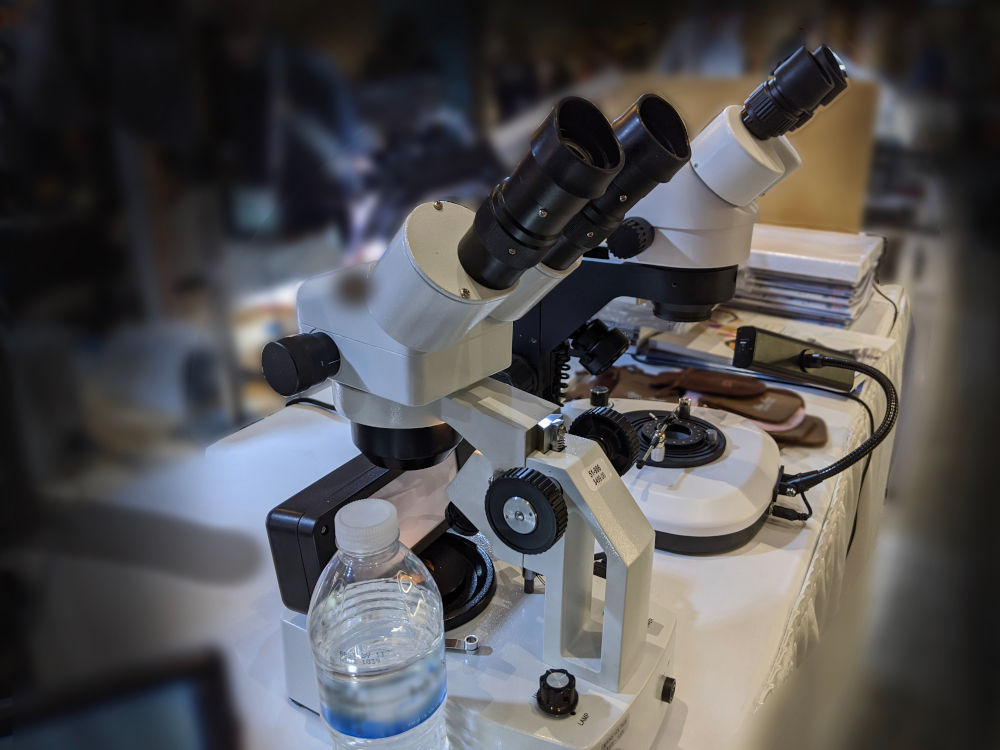
Have you ever thought, “I can fit a magnifying glass in my pocket, why can’t I do the same with a microscope?” No? Huh.
How about, “I have a pocket-friendly phone that solves my need for omnipresent social interaction. Now I really wish I had a pocket-friendly scope so I can study water quality and bacteria on-the-go?” No? OK, fine, so no one really thinks that. Well, almost no one. But I bet you’ll be thinking it by the time we’re done.
Really, the world DOES need a pocket microscope
Not long ago, some people thought really hard about this unfortunate situation. In particular, they thought that if cheap, compact, lightweight microscopy existed, then microorganisms could be studied anywhere. And—here’s the punchline—you could significantly improve diagnosis of diseases, like malaria, in rural areas.
I’m talking about Manu Prakash and Jim Cybulski, the scientists who set out to deliver the essential capabilities of a microscope, in a totally new form factor, resulting in the Foldscope. To learn more about their vision and innovation journey as they developed it, I recommend either the Stanford School of Medicine video, or the TED talk. Because Manu is a professor and Jim was a PhD student, there is of course also a research paper, which I don’t recommend, as it is esoteric and convoluted like most academic research papers, masking the fact that the brilliance lies in the simplicity of the device.
The bottom line is that they succeeded. Lightweight? Check. Portable? Check. Fits the need? Absolutely. And what about cost? Utilizing simple mass produced components, they were able to drive the manufacturing cost to less than a dollar each.
And now anyone can acquire and assemble their own pocket microscope.
So, of course, I bought one. Let’s check it out.
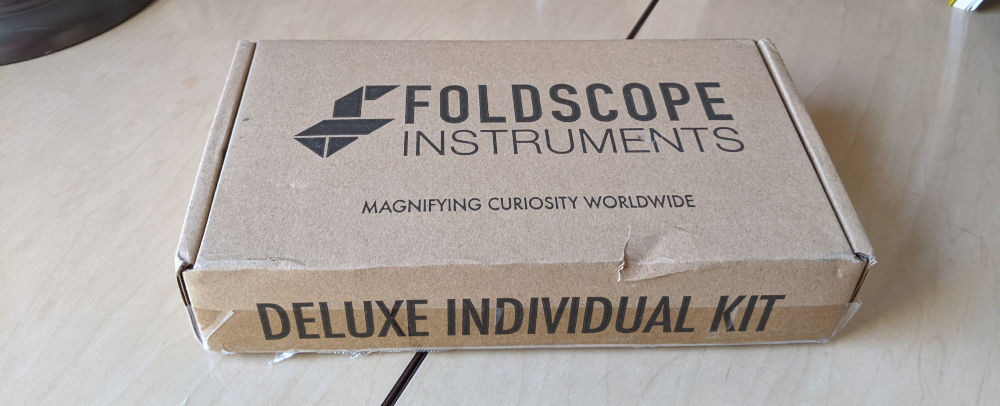
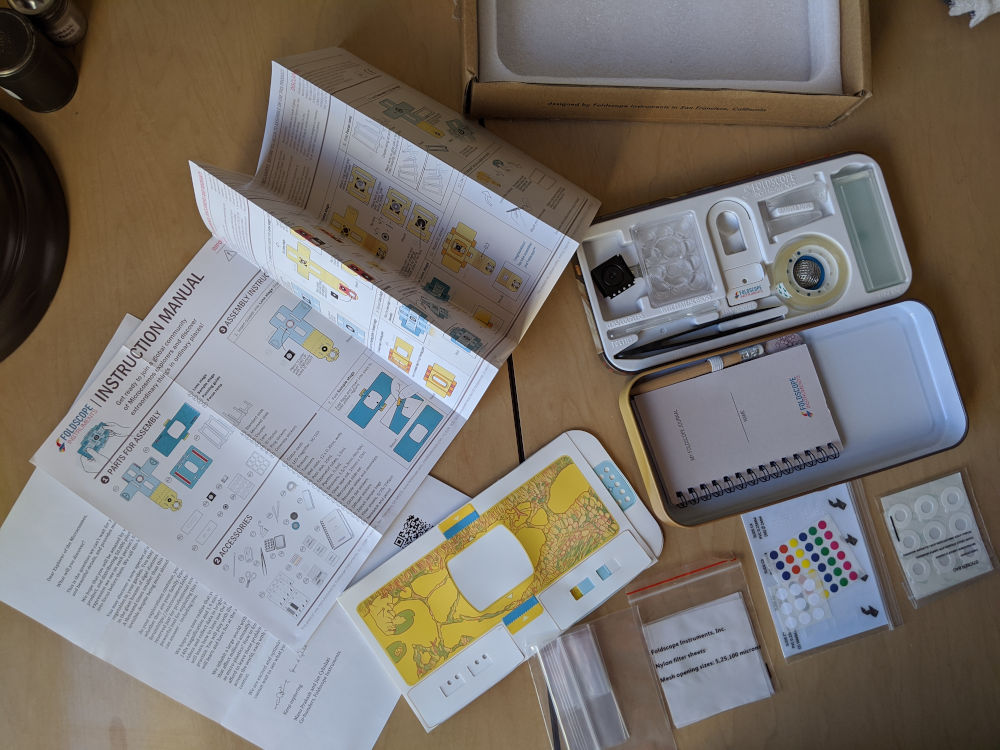
Up close and personal with a Foldscope
You can buy these by the hundred at a ridiculously cheap price, which is great if you’re a health organization, teacher, or have 99 close personal friends who also love science.
Or you may choose to splurge on the deluxe individual kit, which comes in a nice metal box and includes the scope components plus everything you could need for specimen collecting and slide creation. I bought the deluxe kit (sorry friends!). The kit comes with a bunch of fun-looking stuff I’m sure I’ll want later, but let’s dive right into assembling the scope.
Assembly Required
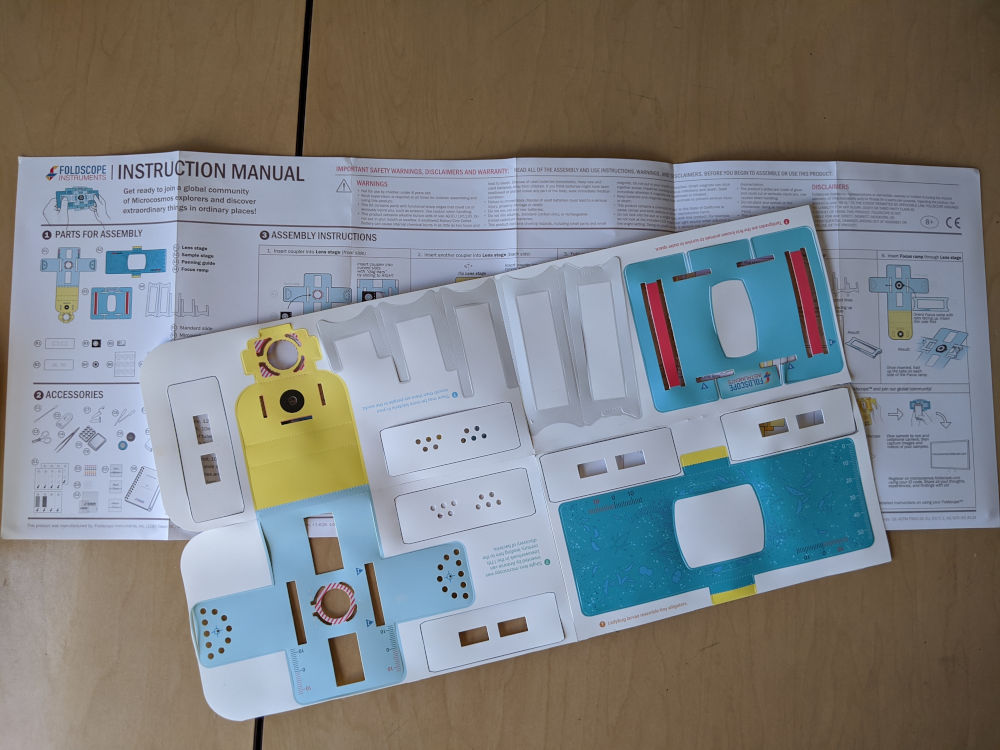


I punch out some paper shapes, insert a couple magnets into pre-cut slots, snap on the lens (which also has a magnet) and do some folding. The Foldscope is described as an origami microscope. Given that, if your origami swans often resemble disgruntled ducklings, you might outsource the folding to an 8-year-old. If you don’t have one, I’m sure a friend will loan you theirs.
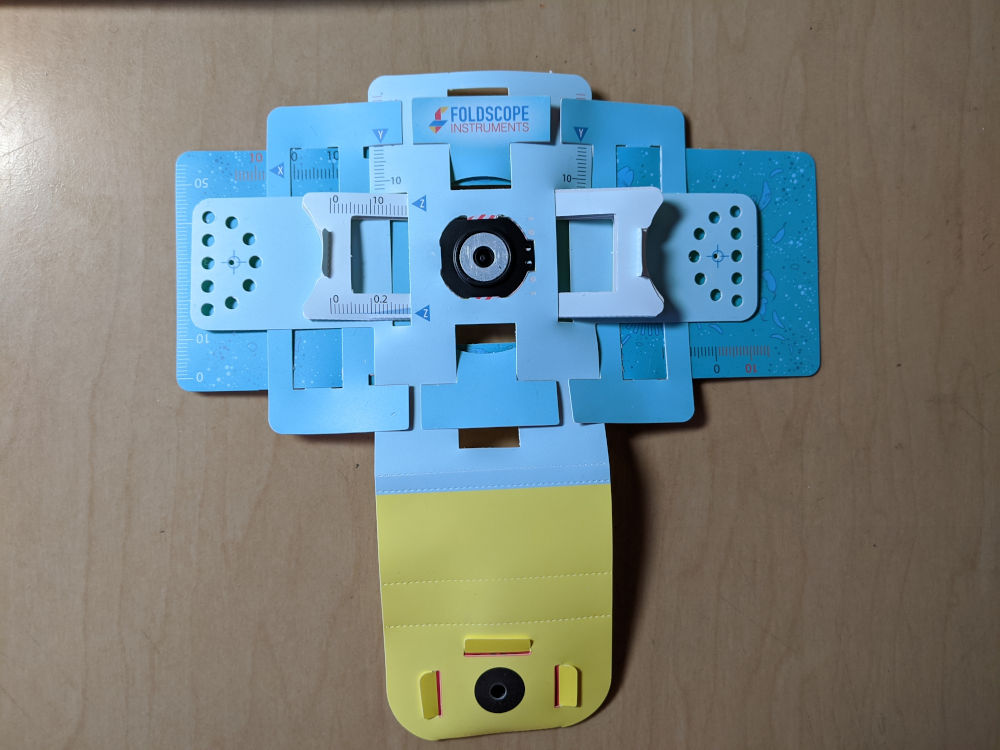
Check out the assembled scope. All told, we’re looking at 4 pre-cut pieces of paper, 3 magnets, 1 lens, and some folding, to produce a complete and functional Foldscope. Ingenious!
That’s the scope. Now for some science.
Now, what to study?
So, when you’re not out diagnosing malaria, what could you do with a Foldscope? Well, if you still have that 8-year-old around, you could perform random acts of science: study microorganisms in water, magnify pollen, check out hairy bug legs. (Bugs are awesome.) If you’re into that kind of thing, you might also check out the foldscope community site to see what others use their scope for, or share your research.
But who am I kidding? No one needs an 8-year-old in order to justify performing random acts of science. Own it, people.
Putting the scope to work
It’s time to conduct some research and see how this scope really works. I need something to study. Aha! Stray feathers. The perfect specimen. OK, let’s see what else comes in this kit: tweezers, scissors, sample jars, strainers, pipettes, slides, LED light, and more. There are both glass and paper slides. I decide to go as low-tech (and pocket-friendly) as possible, using paper slides plus clear stickers to build my feather specimens. Then I slot my paper slide into the foldscope.
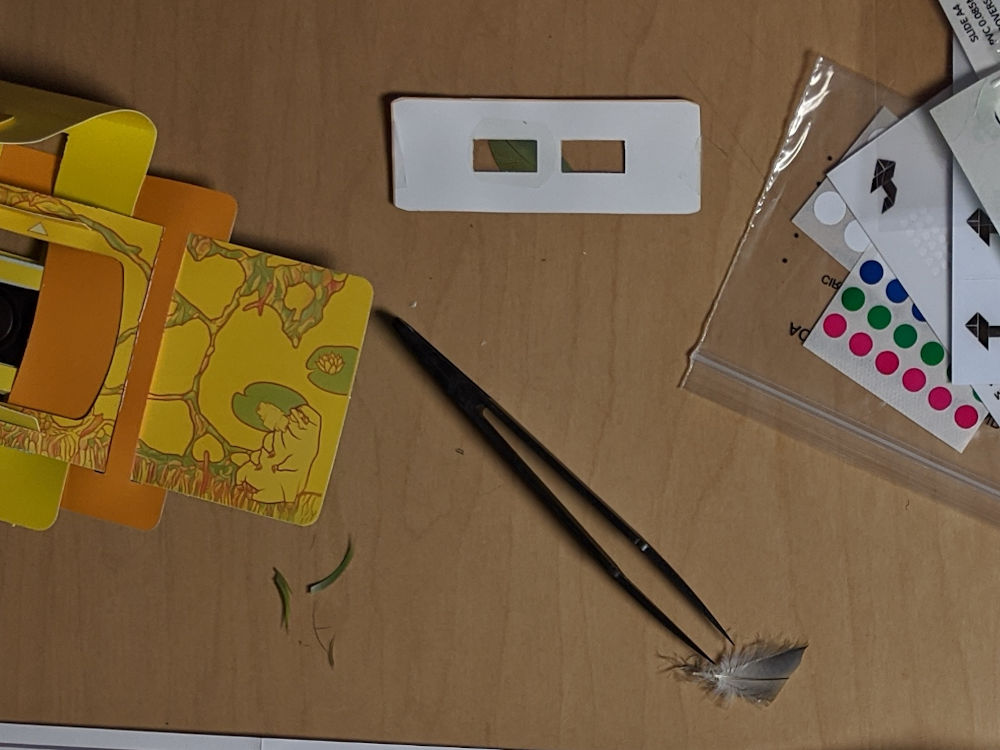
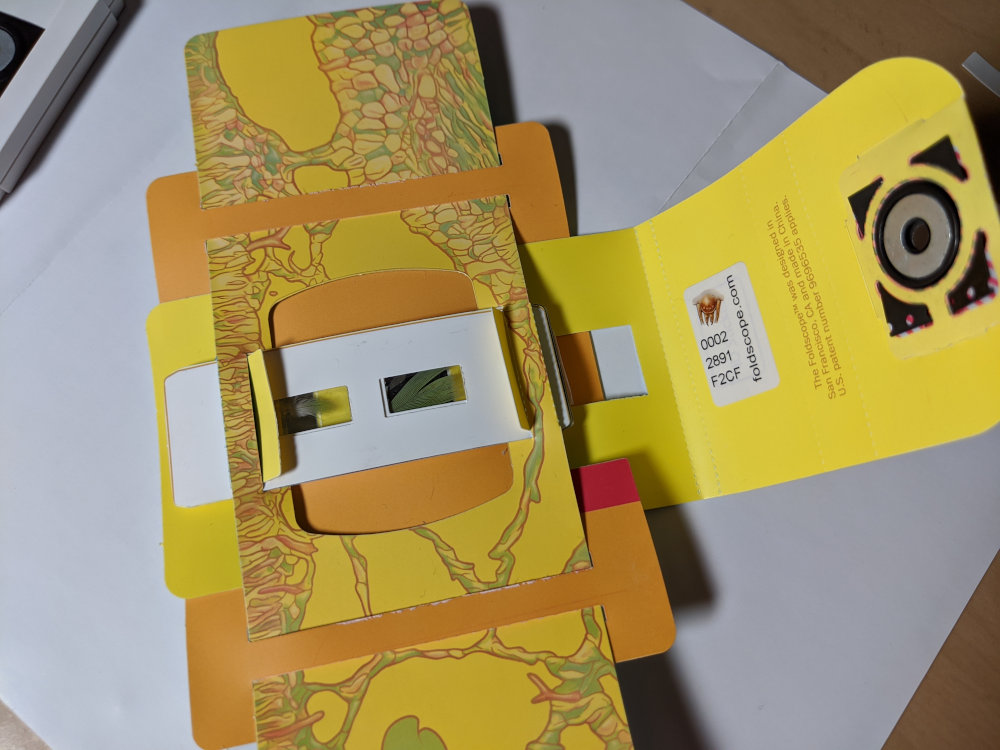
Looking through the scope directly with my eye works surprisingly well, but it’s not easy to share what I’m seeing. Then I try a phone, attaching it with the magnet provided:
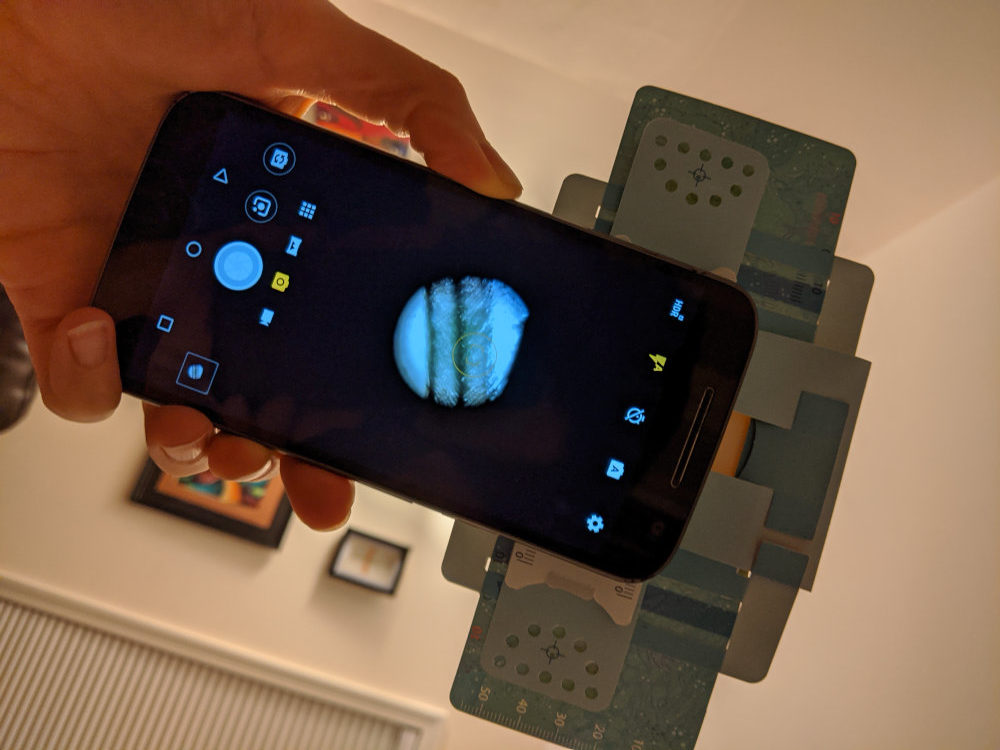

The phone option is obviously convenient – it’s already in your pocket and you can take pictures. But not everyone in the world has a smartphone. So I try the third and final option. Using the LED light and magnet included in the kit, I attach it to the scope with a magnet, turn off the lights, and project it onto a wall…
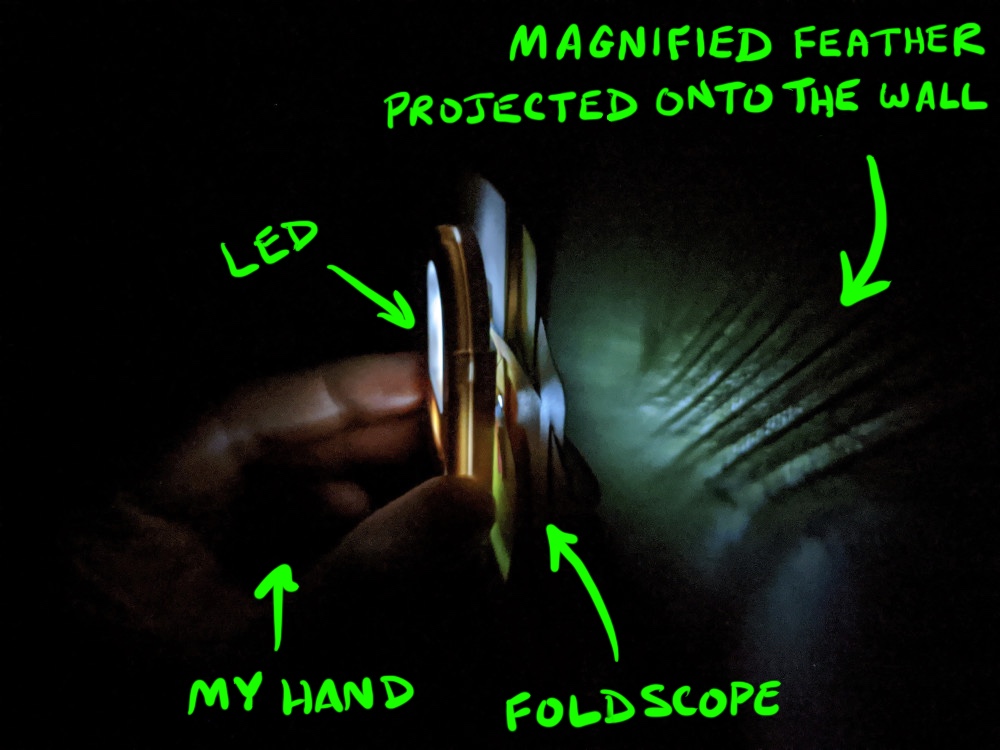
…now that is pretty cool. Just think, for less than a dollar, this can happen anywhere in the world.
Still don’t think you want a pocket scope?
Let’s suppose science isn’t really your thing (What?! How is this even possible?). Even so, haven’t you ever wondered about the water in that fountain at work? Pocket microscope time! Or have you been on a plane, and thought, “I’d really like to see what’s living on this tray table?” Pocket microscope!
Admit it, the next time you are on a plane, you’ll be thinking about this…or maybe you’ll just bust out your Foldscope and find out!
Until next time!
-A
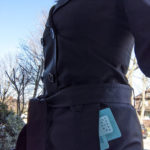
PS. Subscription capability is now live – sign up below to be notified when new posts arrive!
6 replies on “Who Doesn’t Need a Pocket Microscope?”
No hook the phone up with an app that uses machine vision to classify the microorganisms in the image and … presto, cheap water contamination testing!
No -> Now
That’d be an awesome addition. Even for the difficult ones, where many look the same, that could help narrow it down to a few options quickly.
Very cool!
Nice. I’ll be checking it out.
Thanks for the info Angie.
Tell Norbert
Norbert is still waiting for pet tech to hit the avian community. She was rather unimpressed with the package.